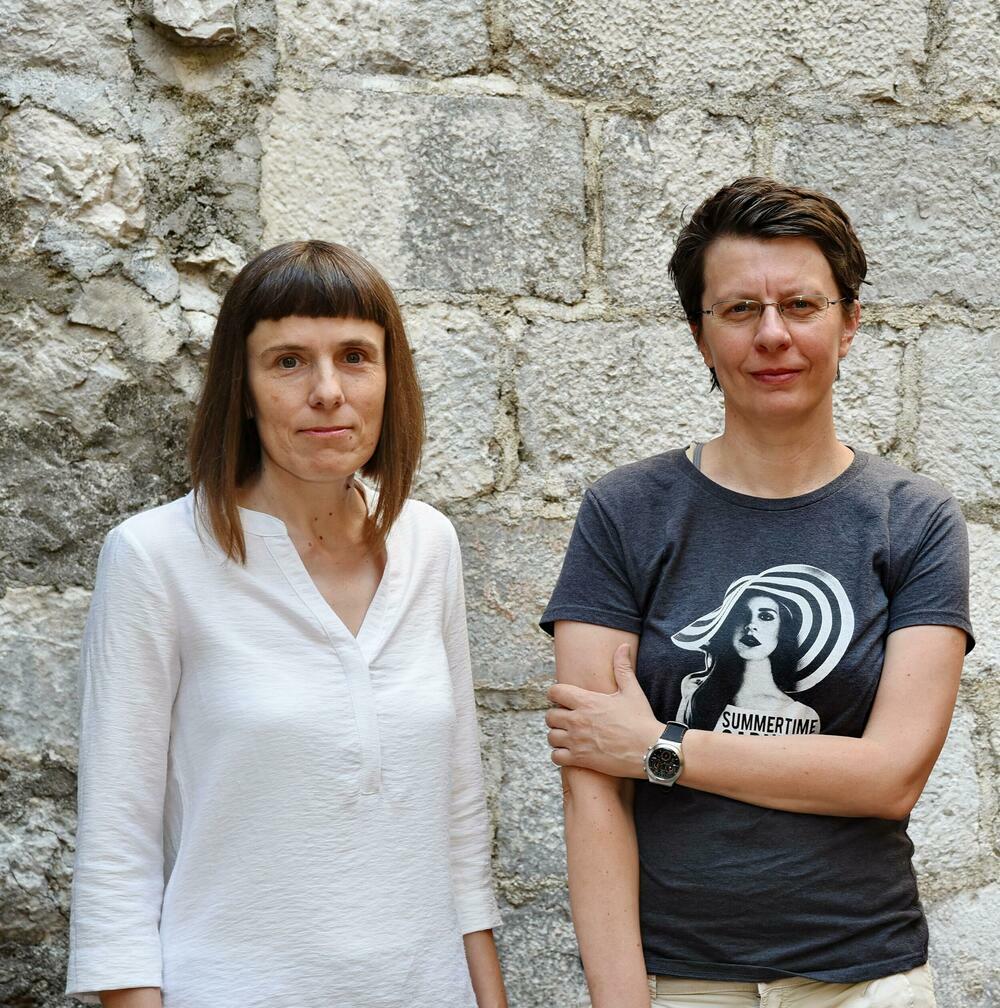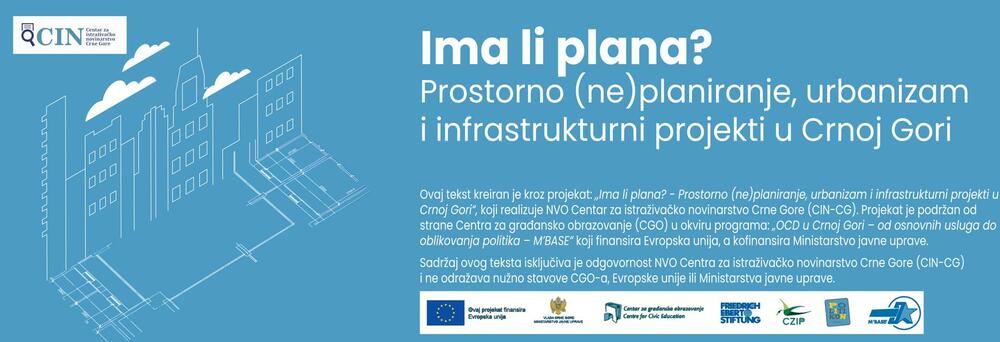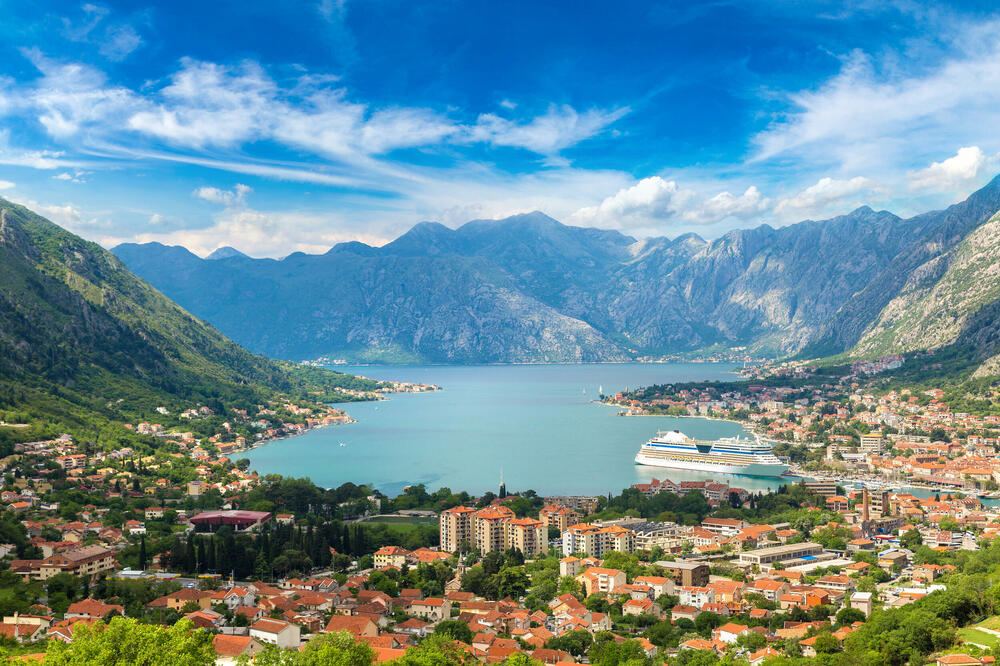It is worrisome that Montenegro has not submitted a series of documents regarding Boka Kotor that the World Heritage Center requested from the state, it is written in the Decisions of the Organization for Education, Science and Culture (UNESCO) from September this year. This, they say, makes the situation "difficult for an accurate assessment of the progress in the management and protection system of the area".
"These statements in the official UNESCO document clearly indicate that they are aware that the situation here is not good," says za Center for Investigative Journalism of Montenegro (CIN-CG) Sandra Kapetanović from the NGO "Expeditio", which has been involved in the protection of the heritage of Boka Kotor for years.
The information on protected areas necessary for UNESCO to assess the situation on the ground was not sent, probably because the key governing bodies, the Council for the Management of the Kotor Area and the Commission for Cooperation with UNESCO, which should take care of Kotor's heritage, are not functional. In addition, decisions on spatial planning in this area have been made for a long time without consultation and consent of these bodies, which violates the Law on the Protection of the Natural and Cultural-Historical Area of Kotor, as well as the basic guidelines of UNESCO.
According to Montenegrin law, the Kotor Area Management Council is a necessary supervisory body for the protection of this area, while UNESCO requires each member state to form a Commission that will hold regular meetings.
In this year's decisions for the protected area of Kotor, UNESCO problematized the general lack of a management and protection plan, the absence of a moratorium on construction from 2020, numerous urban projects springing up in Boka Kotor, as well as the fact that the World Heritage Center was not informed about the planned quarries above Risna, whose design has been stopped for the time being by the Environmental Protection Agency (EPA).
The natural and cultural-historical area of Kotor was inscribed on the World Heritage List in 1979, and was threatened with removal from that list a few years ago, due to uncontrolled urbanization and devastation of the cultural landscape. In the middle of 2016, the UNESCO World Heritage Committee made a decision on the measures that should keep the area of the Old Town and Kotor-Risan Bay on the List of Protected World Heritage.
Without a Council for more than three years
CIN-CG previously wrote that the Kotor Area Management Council is not functioning. Although it should meet at least once a month, the last session was a long time ago - 20.05.2020, as they told CIN-CG from the Municipality of Kotor. This continuously violated the Law on the Protection of the Natural and Cultural-Historical Area of Kotor, which refers to the UNESCO heritage of this city.
According to that Law, the Council has a key role in the preservation of heritage, and is obliged to give consent to all projects carried out in the protected area and its surroundings. Exactly in 2020, when the Council ceased to exist, the moratorium on construction in the area of Kotor ceased to be valid. Since then, numerous urban and other projects in the area have been approved, but without the consent of the Council.
"Council for managing the area of Kotor is appointed by the Government of Montenegro, the president of the municipality is also the president of the Council. After the August 2020 elections, the new president of the Municipality of Kotor, Vladimir Jokić, was elected, but the Government did not make a decision on the appointment of a new Council, i.e. a new President of the Council,'' the Municipality said.
The Government of Montenegro did not answer the question of CIN-CG why they did not announce the Council in the previous three years and when they will do it, but said that the questions of CIN-CG were forwarded to the Ministry of Culture and Media (MKM).
The Commission for Cooperation with UNESCO-M has not met since its formation
The Commission for Cooperation with UNESCO was formed in July 2022. This Commission was formed by the Ministry of Culture and Media. According to UNESCO's guidelines, the Commission mediates between the state and UNESCO, and is of key importance for the proper process of heritage protection.
The MKM did not answer the question of CIN-CG when the last meeting was, however, Biljana Gligorić, an architect from the NGO Expeditio, who is a member of this commission, confirmed that the Commission has not met once for more than a year.
"I learned that my application was accepted from the Decision on the Formation of the Commission, which was published on the website after the Government session," Gligorić told CIN-CG.
She received the first invitation to the meeting on October 29 of this year, just one day after CIN-CG sent the MKM a question about the number of meetings of the Commission since its formation. The meeting to which Gligorić was invited will be held on Wednesday, October 11.

According to the UNESCO guidelines, the Commission should be very active: to give guidelines, hold regular meetings, closely monitor the situation with the heritage and ensure that information is constantly present on the public scene. Apart from the information about the formation of this commission, from July last year, no content about this commission, nor the activities of that body, can be found in the Montenegrin media.
At the upcoming meeting, Gligorić will question the fact that the Commission has not met even once. "It is difficult to understand the reasons why we could not hold the sessions. The message we are sending as a country is not good," said Gligorić.
He believes that it is crucial to mention the problem of the Council, as well as all the documents requested by UNESCO, which have not yet been completed.
One of the key issues is the moratorium on construction. "UNESCO urges this to happen".
Gligorić states that Montenegro failed in this process. "The minimum had to be met, which is that the institutions in charge of managing the area should be functional," she said.
UNESCO: An effective legal framework must be established, the pressure on the area is increasing
UNESCO points out that Montenegro has not submitted the updated Management Plan for the area of Kotor this year, as well as the HIA study, i.e. the assessment of the impact on the cultural heritage for the area of Kotor - two documents that UNESCO has been requesting from Montenegro for years.
It is stated that the revision of the Management Plan has not been completed since 2018, when UNESCO suggested that it should be done.
The management plan of the area of Kotor is one of the key documents for the management of the protected area, and it states that the revision must be done every five years. Currently, the Management Plan made in 2012 is in force, the revision of which has never been made.
UNESCO points out that this plan should be integrated into the legislative framework, and that it should give guidelines when it comes to large tourism infrastructure projects, which, as they state, "may have a negative impact on the protected area".
In September, "Vijesti" published the response of Vladimir Jokić, President of the Municipality of Kotor, to this year's UNESCO guidelines. As reported, Jokić said that the revision of the Management Plan began in 2019. Jokić pointed out that the continuation of work on this document and the formation of the Council is expected after the formation of the new Government, which has been under negotiation for a long time.
UNESCO also expresses concern over the fact that the revised HIA was not, as they state, "shared with the World Heritage Center, nor publicly available", even though Montenegro informed them that its preparation had been completed.
They state that the large number of projects that have been approved in the protected area and the surrounding area point to the "urgency to complete the planning framework". They emphasize that regardless of the individual impact assessments that are carried out for capital projects, "a large number of proposed projects and their cumulative effect can significantly affect the protected area".
Additionally, it is pointed out that Montenegro must deal with "increasing development pressure within and around the protected area".
A more serious protection plan for the environment of the protected area is needed
This year, UNESCO asked Montenegro to study the protected environment, the so-called "buffer zone". As they state, it is necessary to define the areas around the area, in which projects can affect the universal value of heritage. In accordance with that, UNESCO also requires all documentation of projects that will be proposed in the protected environment and may have a negative impact on the heritage. Such, as they emphasize, are "projects proposed on the island of Sveti Marko and projects located on both sides of the entrance to the bay".
In its latest guidelines, UNESCO is urging a moratorium on construction, which expired in 2020 and has not been reinstated since. They also list a number of projects that could potentially have a negative impact on the area, the construction of which has been approved in recent years. Although most projects in Montenegro have been assessed as not having a major impact on the protected area, UNESCO warns of the cumulative effect of numerous projects: a hotel in Mu, a residential complex in Dobrota, the construction of villas in Prčnje, "Sidro Center" in Škaljari. -a, most of these projects require some kind of refinement and improvement in order to be approved.
The construction of two hotels in Orahovac, which have been estimated to have a moderate negative impact on the protected heritage, also raises concerns. They also emphasize that attention must be paid to the construction of projects intended for mass tourism, such as the road through the Luštica peninsula.
The protection of the area should also be dealt with in detail in the so-called protective belt, i.e. the "buffer zone", which includes the municipalities of Tivat and Herceg Novi. That is why it is important that the representatives of these municipalities be in the Council for the Management of the Kotor Area, when it is formed again, says Kapetanović. "That was never the case before," she said.
On September 22, the President of the Municipality of Kotor, Vladimir Jokić, stated in the program "Okvir" on Radio and Television of Montenegro that there will be no moratorium on construction in Kotor.
CIN-CG previously wrote that the construction of the Kotor-Lovćen cable car, i.e. the access roads, devastated the area around the protected area. The government submitted to UNESCO the previously made visual renderings of the project, based on which UNESCO gave its approval for the project. However, damage in the form of eroded hills, which can be seen from several locations in the bay, was not "announced" in these images.
Montenegro has no real capacity for UNESCO guidelines
"To comply with these guidelines, serious changes are needed in the approach to spatial planning and World Heritage management," says Kapetanović.
It would be necessary for each of the documents that are relevant for the protection of the Kotor area, which UNESCO points to, to be of high quality and harmonized, and for all actors involved in the process of protection, planning and management of the area to implement these documents, as well as for regular monitoring to be carried out . In practice, however, these documents do not rely on each other, nor are they respected sufficiently, explains Kapetanović
"The basis for the protection of the area is the Cultural Heritage Protection Study, which should, especially when we have a World Heritage area, be fully incorporated into the spatial-urban plan. According to the recommendations of UNESCO, an assessment of the impact on the heritage should be made - HIA, which is an excellent control mechanism for creating a spatial plan. The management plan or management plan is an operational document, which must rely on all previous documents, and which precisely defines how the area is managed and what the obligations of all actors are,'' says Kapetanović.
It is very important that the comprehensive HIA for the entire protected area must be updated, in active use and become publicly available, Kapetanović agrees with the UNESCO guidelines. "In Montenegro, an HIA is currently being done for almost every individual project, which is pointless, because then the cumulative effect of the projects on the protected area is not taken into account. When we have one good HIA for the entire area, we will have a much better overview of the situation", explains Kapetanović.

Bonus video:




